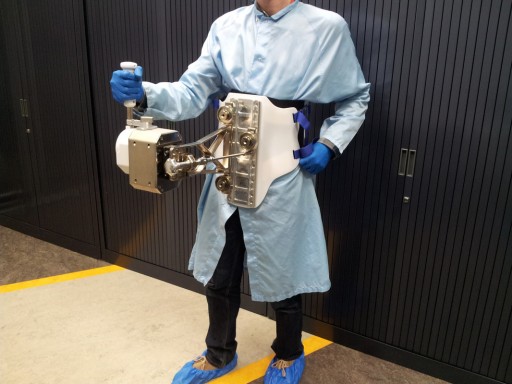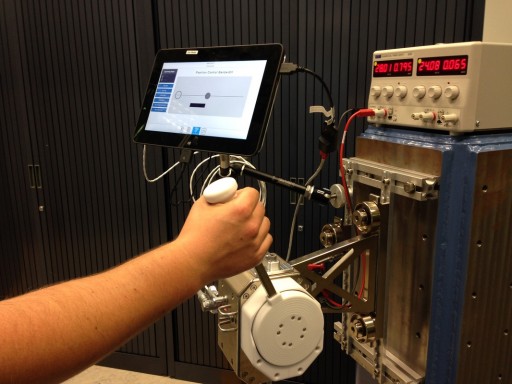ESA Haptics

The Haptics-1 hardware flying to the International Space Station includes a single degree of freedom high-resolution force control joystick to be used in physiology research in zero-G with a technical element as this setup can find application in future space-telerobotics technology. The experiment will study how remote-controlled robot operation from space (telerobotics) can be accomplished with special focus on providing a haptic feedback to the controller in the form of force on the control device. This requires detailed knowledge on the effects of microgravity on force perception and motor control capability which has not been studied before.
The experiment hardware consists of a joystick that uses a highly power-dense brushless direct-current actuator, an EtherCAT motor controller, custom-built force and torque sensors and flight computer using Commercial off-the-shelf components. The Haptics-1 joystick is mounted via standard space station interfaces to a body harness.
Haptic feedback is extremely important for future telerobotics performed from space as it provides the controller with guidance as to how much force needs to be applied to complete a given job. This is already used on Earth, but for application in space, the examination of haptic feedback perception in astronauts in zero-G is necessary.

As part of experiment sessions, the astronaut can push and pull the joystick to complete simulated tasks that involve haptic feedback provided by the system that can produce minute forces that will be hard for most people to notice up to considerable resistance.
A total of seven different experiments are planned with the payload, although more can be easily uploaded to the instrument computer. The instrument is controlled via a touchscreen that builds the primary interface to the crew member.
For the experiment, crew members will be playing the computer game Pong – moving a bar on the side of the screen as precisely as possible under different feedback settings. Each experiment is accompanied by questionnaires that evaluate the smallest feedback a crew member could feel and how realistic the different settings feel. The experiments will be conducted at different points in the crew member’s mission to determine the effect of the mission duration on human motor control in microgravity.
The Haptics-1 experiment explores uncharted territory as it will answer the question whether the human body will be more sensitive to forces in space and how force perception changes over time during exposure to zero-G.
Telerobotics are expected to come into play in the future when astronauts control robots performing spacewalks on the exterior of spacecraft or telerobotically control rovers on Mars or an asteroid from a spacecraft in orbit.
